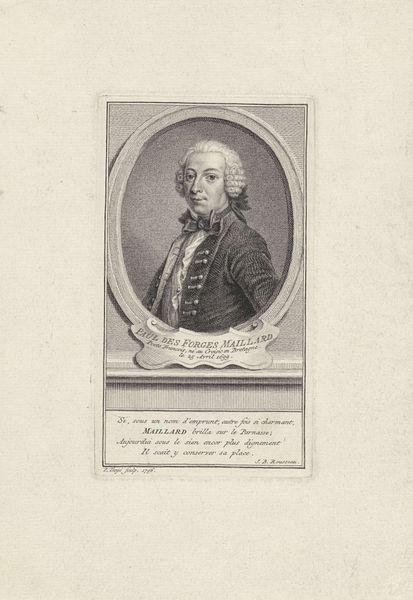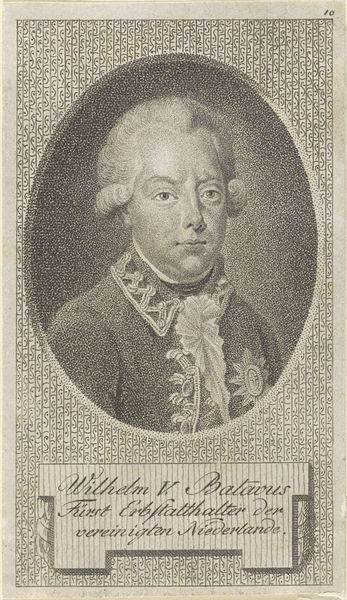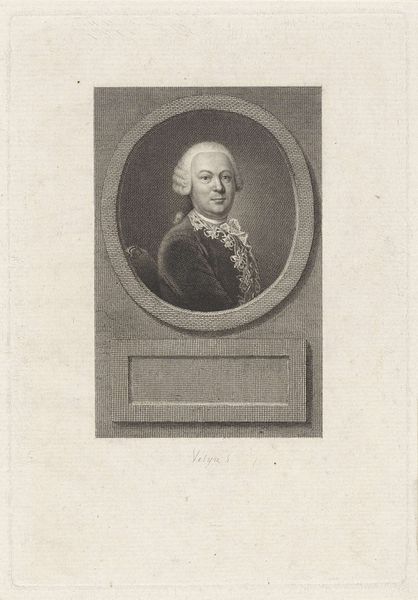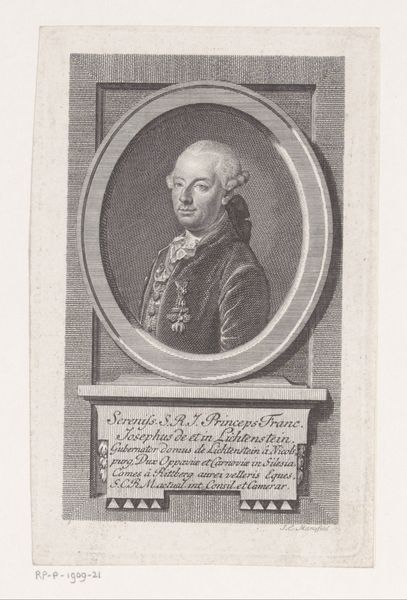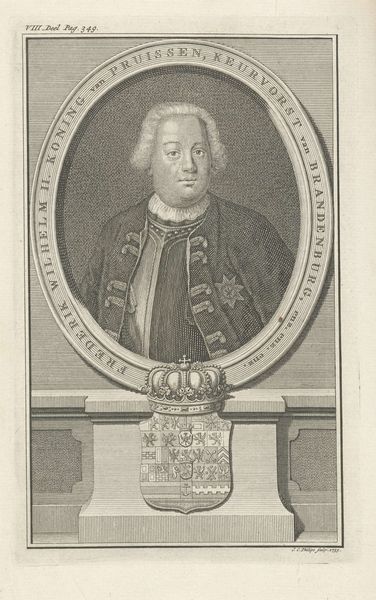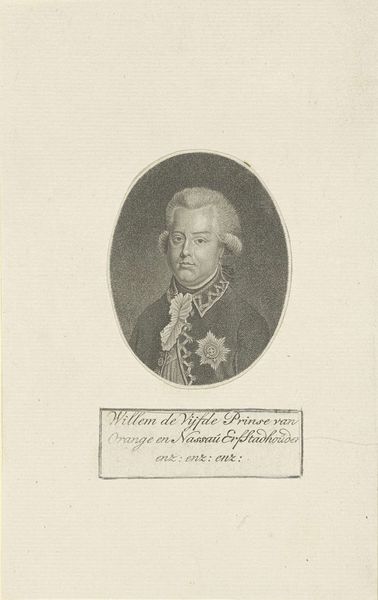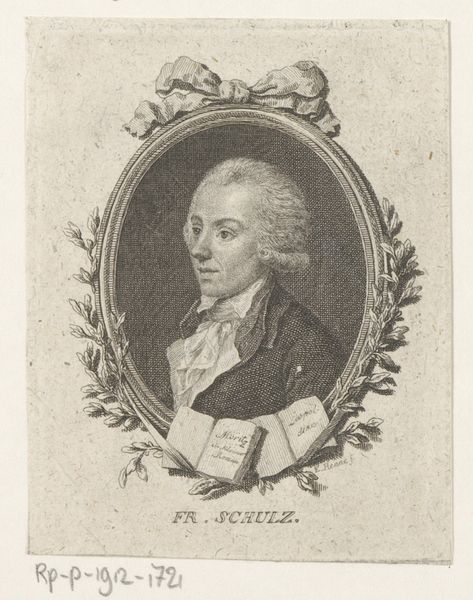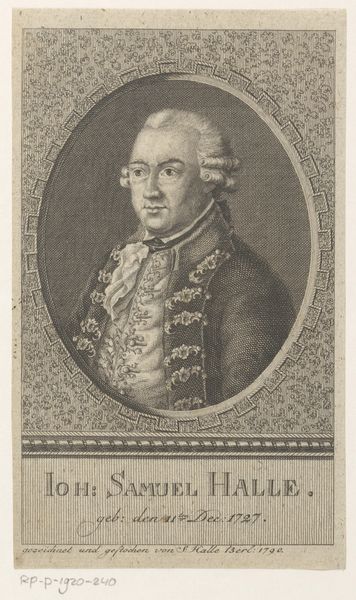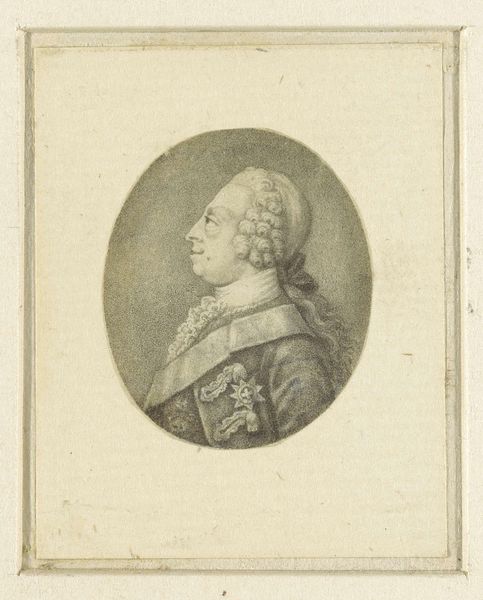
Dimensions: height 222 mm, width 164 mm
Copyright: Rijks Museum: Open Domain
Curator: This is a 1776 engraving titled "Portret van Johan Arnold Zoutman" by Pieter Willem van Megen, housed here at the Rijksmuseum. Editor: It has an imposing feel. It makes me think of societal roles, given the stiff pose, almost as if to control the impression. Curator: Exactly. Let’s dive into that a bit. Johan Arnold Zoutman was a Dutch naval figure, a Vice-Admiral. How do you read that considering the production of portraiture in this period? Editor: The choice of engraving itself becomes quite significant. It allowed for wider circulation, solidifying Zoutman's image and status within Dutch society, which depended so much on its navy for trade and defense. It connects directly to Dutch power, what it was materially based on, doesn't it? Curator: It absolutely does. Beyond the representational aspect, consider the symbolism deeply rooted in class. The attire is also noteworthy— the meticulously detailed naval uniform with decorative embellishments would also speak to this. What does it suggest? Editor: Production wise it's all about display of authority and material means! These details weren’t mere decoration. They reflected Zoutman’s status and by extension, the Netherlands’ global reach during that era. The Dutch Golden Age didn’t end without immense, widespread and long-lasting social disruption due to economic exploitations abroad and internally. I see class being performed on a stage that this picture provided him. Curator: And how fascinating it is that it is not some huge oil on canvas. Editor: Indeed, this engraving isn’t just a portrait; it's a statement. It's a tool to broadcast and reinforce an image of power. The labor of its creation is replicated so the work becomes ideological through its means of mechanical reproduction, with careful detail adding to this effect. Curator: Examining the material production really adds to that interpretation and gives insight into the intersection of power, image, and the Dutch Golden Age. It allows us to remember that an image is not neutral but rather a work that promotes and obscures a set of interests. Editor: The implications go well beyond the artwork itself to the social-political structures of the time and still present. Curator: Thinking about all these elements definitely adds complexity to understanding its function and continued importance, doesn't it? Editor: Absolutely, looking at how it was made and where it sits gives me a new appreciation.
Comments
No comments
Be the first to comment and join the conversation on the ultimate creative platform.

